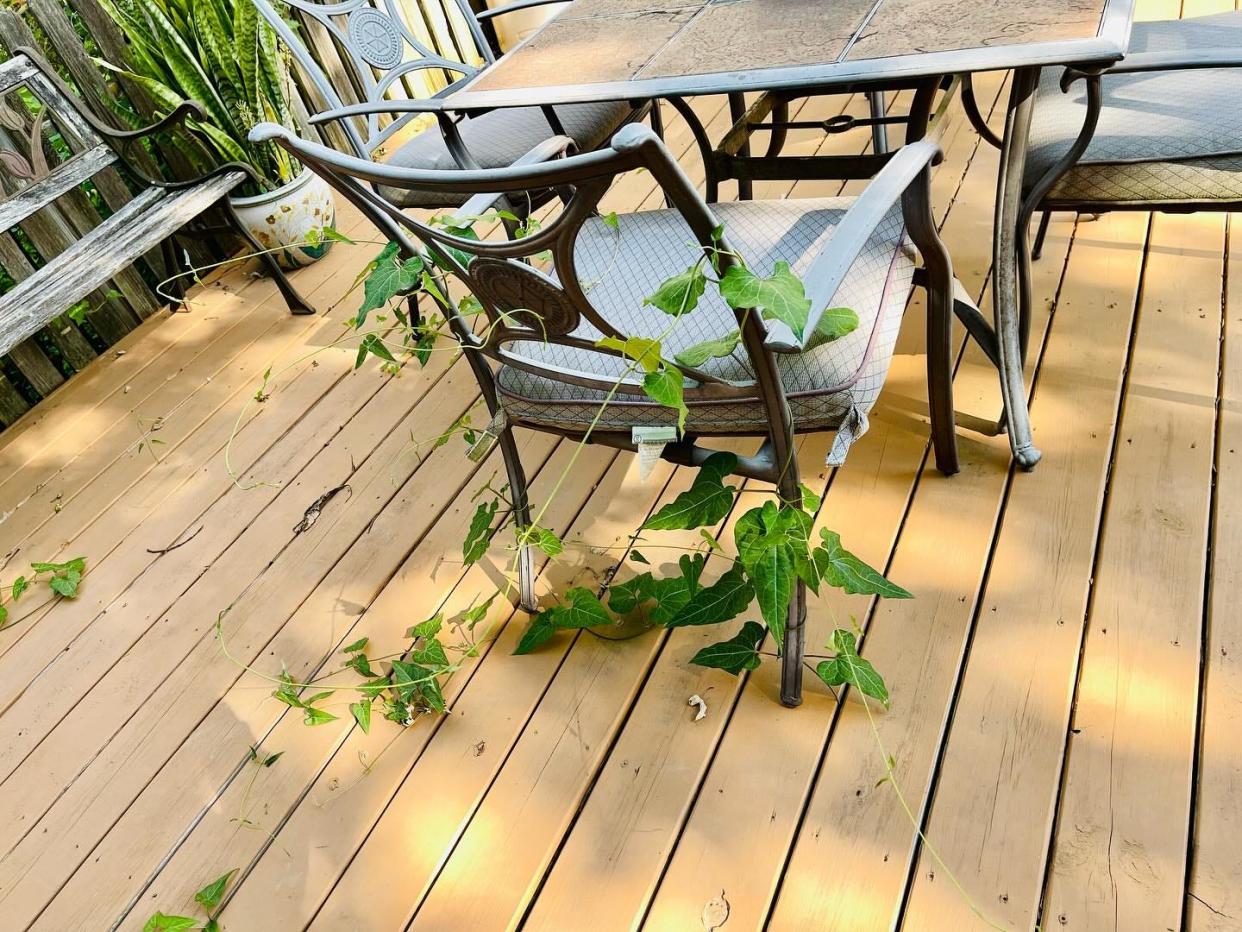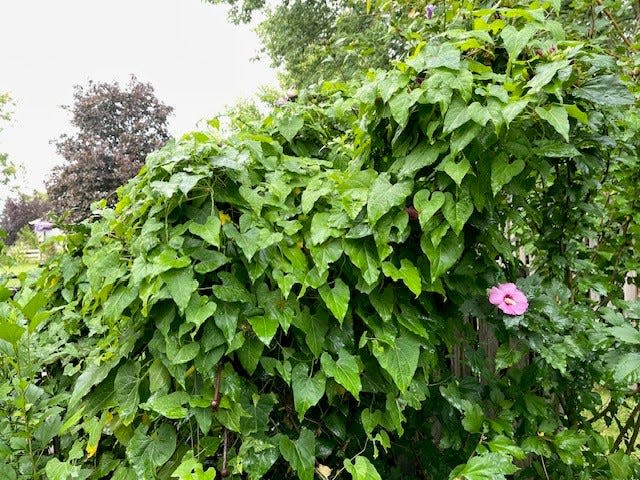How to keep honeyvine milkweed from taking over your Indiana yard
WEST LAFAYETTE, Ind. ― This insidious vine can wind around patio furniture, cover other plants or even an entire bush within days or appear out of the blue sticking straight up in your lawn.
If it has been allowed to grow untended, the result might be reminiscent of a scene from "Jumanji" or of "Audrey II" in "Little Shop of Horrors."
What's required to keep it in check isn't to deprive it of your blood ― but it certainly requires a fair amount of sweat and maybe a few tears.
A Purdue horticulture specialist puts the tenaciousness of the honeyvine milkweed into perspective.

What is the honeyvine milkweed?
Purdue consumer horticulture extension specialist Karen Mitchell says the honeyvine milkweed is native to Indiana and related to the common milkweed, which is prized as a source of food for monarch butterfly caterpillars.
But although the common milkweed and other related species that grow straight and tall can spread by going to seed, the perennial honeyvine takes the "vine" part of its name seriously.
"It's not necessarily a bad guy," Mitchell says, "but it is considered a weed because of its aggressive growth habits."
What can you do to contain honeyvine milkweed?
Mitchell, who confesses she also has a patch of the stubborn and prolific vine in her Battle Ground yard, says your best bet is to keep it trimmed. Its roots are hardy, so cutting it back won't kill it or entirely keep it from spreading, though.
But whatever you do, try to keep it from going to seed ― a process that starts this time of year.
If it comes to it, Mitchell says, herbicides can eradicate it.

Tenacious natives and some perspective
A growing movement recognizes the value of promoting plants that are natives to the area, because they're more likely to sustain important and native insects and animal life. Non-native plants and trees can be destructive to native habitats and detrimental to other species.
But Mitchell can rattle off a few other pesky natives we're not endeared to, such as poison ivy, morning glories and pokeweed.
The weeds specialist ― who notes with a laugh that aggressive weeds provide some job security ― says home gardeners and farmers alike share an antipathy toward the unwanted spreaders.
Yet "a weed is just a plant out of place," she said. "I kind of developed some admiration for these plants out of place."
This article originally appeared on Lafayette Journal & Courier: Native honeyvine milkweed an aggressive grower 'out of place'
